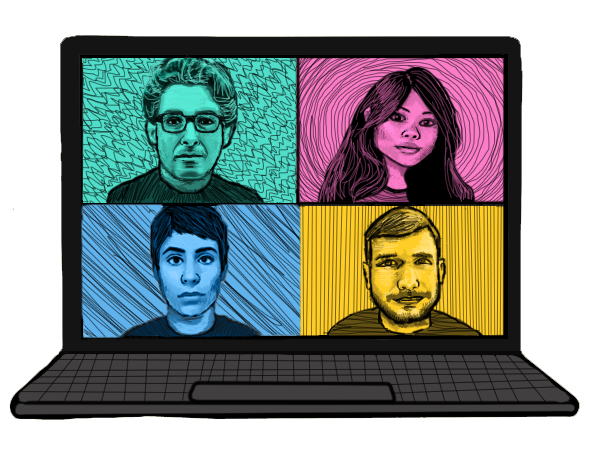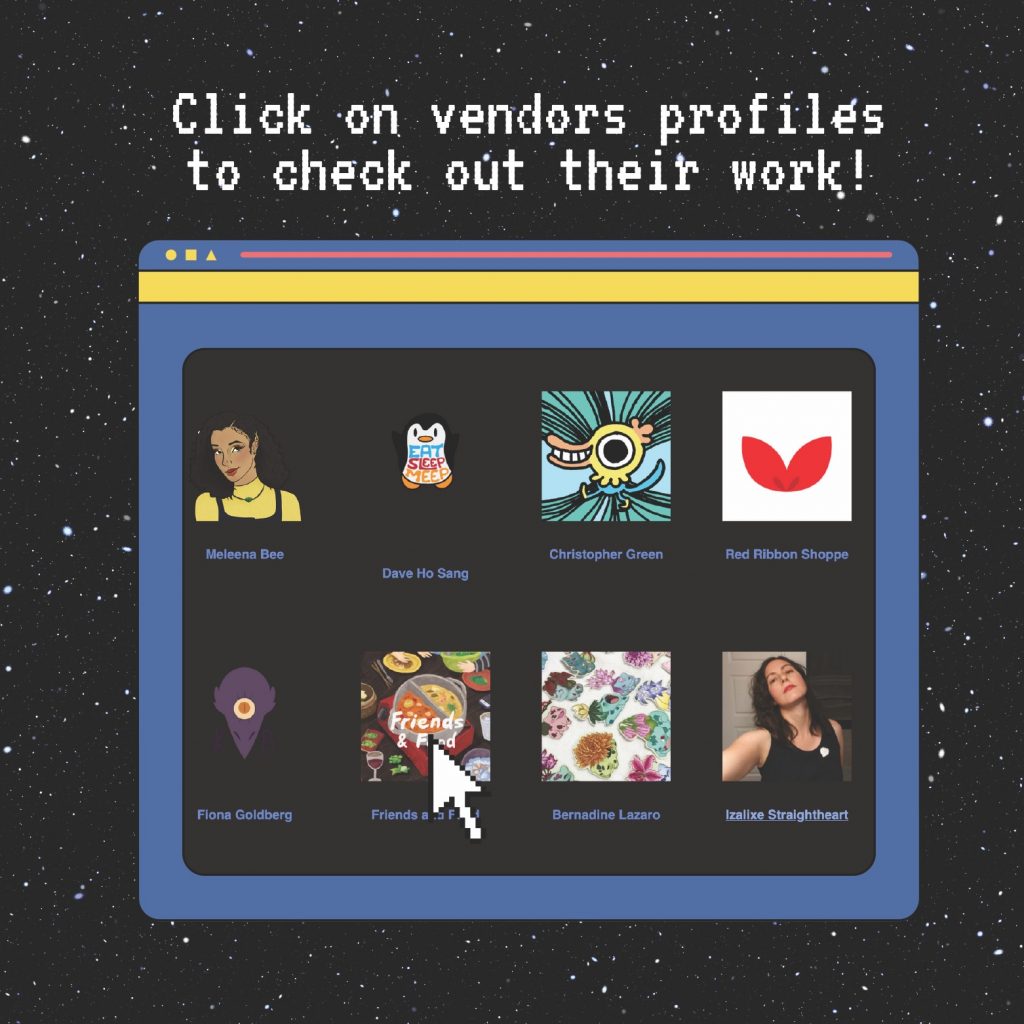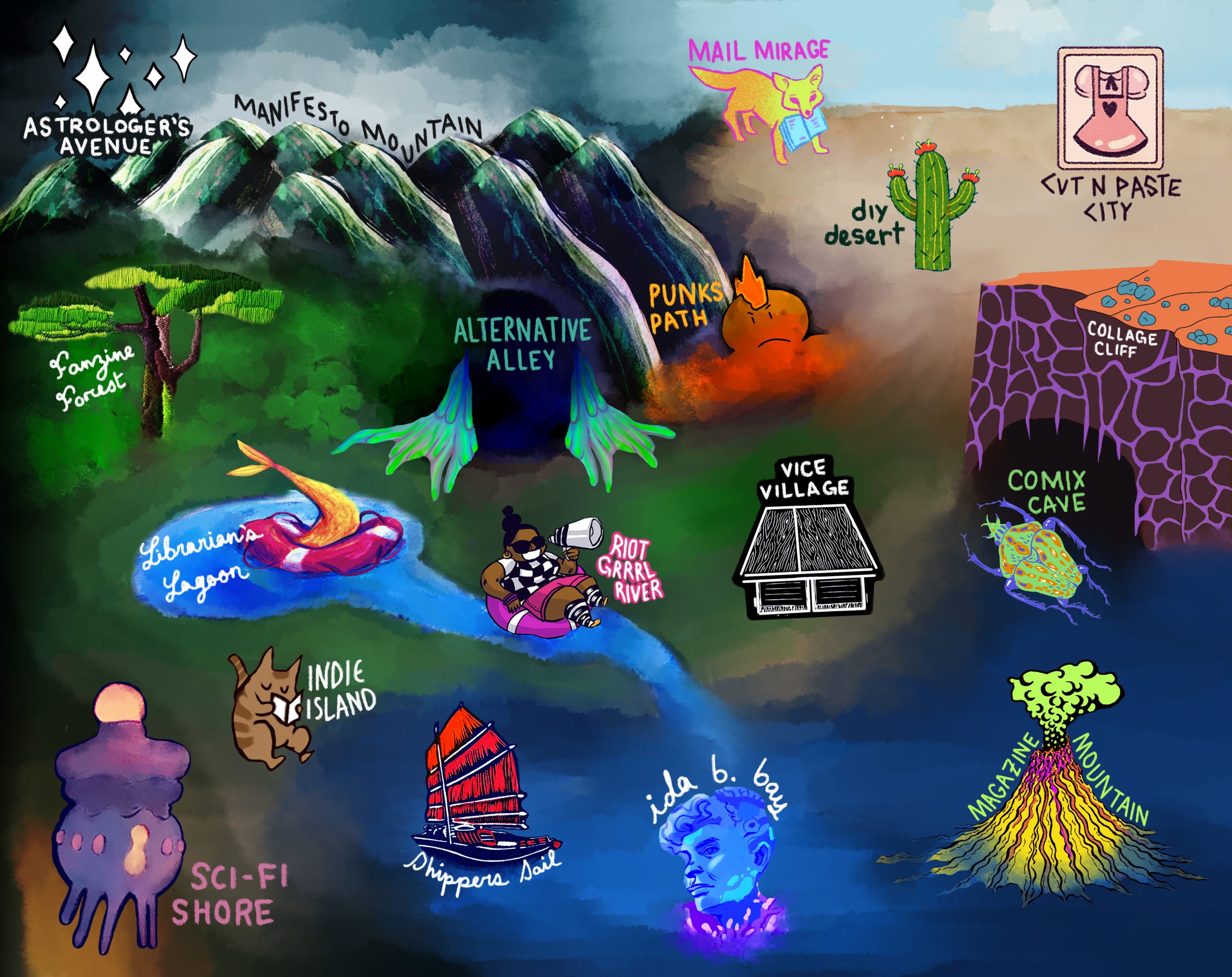
If zinesters are the lifeblood of zine culture, then zine fairs are the heart, offering a place to gather, be inspired, and connect. It’s one of the few chances creators get to meet audiences (and each other) — and hopefully make some dough; a special place where new discoveries, projects, and friendships are born. Did we really want to give all that up in an already demoralizing year?
Heck no.
By the time May rolled around — and we realized we were in this COVID-19 thing for the long haul — our thoughts were fixed on Canzine. Sans pandemic, we at BP are hosting our zine festival in cities across Canada, with a vendor list totaling 600 zinesters and thousands of visitors. With in-person gatherings a no-go, we had to get creative.
Cue the montage of grant writing, marathon Zoom calls and me cutting off all my own hair (makeover time). Wrapping our heads around how a virtual festival might fill the void was a challenge. We weren’t alone in this, of course. Our friends in other zine fairs were trying to work it out, with low-barrier efforts such as hashtag campaigns and video workshops, in an effort to keep our community connected.

The biggest challenge was creating the browsing environment, the heart of a zine fest. We needed something that was not only interactive and engaging, but seamlessly integrated. We sought to build a marketplace where shoppers could browse at their own pace, add all their items from hundreds of vendors into one basket, and pay just one shipping fee. No other indie fair was doing it, so how were we going to pull this off by October?
That’s where community comes in! We reached out to our friends at the Hand Eye Society, a not-for-profit videogame arts organization in Toronto, and asked for help. Being generally game for any challenge, they came aboard.
Come August, we opened registration and 260+ vendors were up to try out our virtual zine fair. What followed was a parade of forms, spreadsheets, phone calls and thousands of emails. Thousands. I still see only inbox when I close my eyes. Many thousands.
We blinked and it was already September. Hand Eye was working hard to upload all vendors’ assets (images, info, items) to Canzine.ca. At Broken Pencil, we were coordinating vendors, programming, and trying to get the word out. As we got used to the idea of setting up shop in the virtual verse, new possibilities emerged, some of which would not be possible in a physical space. Why have live events when you can just make a video workshop available for three days, complete with closed captions? Done. International collaboration became easier, so we invited our friends in zine libraries around the world to share video tours of their collections and spaces: Alphabet Zoo in South Africa, Fanzinoteca d’Italia 0.2 in Italy, Sister Library in Indie and Barnard College’s famous zine collection in New York City.
When October rolled in, I, for one, was getting increasingly anxious. We’ve built it, but will they come? What if vendors don’t make any money? What if this is all for nothing? Nerves ahead of in-person Canzine are par for the course, but this was something new. There was no precedent to say this would work.

As Hand Eye sorted out the back end, our efforts came to life. What was once a grainy sonogram was now a live bébé with fingers and toes and lots of colour.
It turns out our child would have an early aughts Neopets vibe, complete with 18 gorgeous illustrations from artists around the world, each one the backdrop for a virtual space that housed a dozen vendor tables or two. Add to that a slew of Easter Eggs (Canzine Pet Yearbook anyone?) and fun features like the much-beloved ‘Random Zine’ Button, and a brand new kind of zine fair came to be.
Within the first day of the festival, it was clear it had all been worth it. Tens of thousands visited Canzine.ca, 550+ zine fans bought close to 4,400 items. More than $40,000 in zine sales. For the first time ever, zinesters got to leave their tables and scope out the festival without worrying. Workshops were delivered, with topics ranging from civil rights zinester Ida B Wells to DIY counter-surveillance to zine librarianship. Zine horoscopes were told. And, thanks to our evening social space Club Canzine (yes, on Zoom), new friendships were made and skills were shared. Awards were given. It was bananas and heartening to see all the zine love and support.
We didn’t have long to bask in the afterglow of a triumphant Virtual Canzine. Our next logistical hurdle was upon us: shipping. To save visitors and vendors on shipping, our under-200-sq-ft office became an Amazon-esque warehouse — minus the space, robots, basic infrastructure, and backing of a billionaire — with packages from 260+ vendors flooding our space. We stared at the mountains of packages and whispered, “What have we done?” Consecutive lockdowns in Toronto and postal delays across the border slowed us down considerably. As of this writing, besides a few items gone astray, it’s finally done!
Thanks to our team’s hard work, Hand Eye Society’s efforts, and vendors’ continuous encouragement and willingness in the face of uncertainty, our first Virtual Canzine went pretty darn well. What’s exciting is what comes next: Spring Canzine, in partnership with the Toronto Comics and Arts Festival (TCAF), when we get another shot at a virtual event — this time with some experience under our belt. Stay tuned for details.


